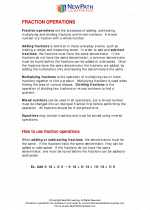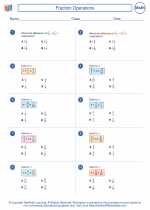Regrouping in Math
Regrouping is a fundamental concept in math, particularly in arithmetic and place value. It is also known as borrowing or carrying in some contexts. Regrouping involves changing the value of digits within a number when performing operations like addition, subtraction, multiplication, and division.
Regrouping in Addition and Subtraction
When adding or subtracting numbers, regrouping is necessary when the sum or difference of two digits is greater than 9 (or the base of the number system being used, such as 10 in the base-10 system).
For example, when adding 28 + 47:
28 + 47 ----- 75
In this case, regrouping is necessary because 8 + 7 is 15, which is greater than 9. So, we regroup by carrying the 1 to the tens place and writing the 5 in the ones place.
Regrouping in Multiplication and Division
In multiplication, regrouping occurs when multiplying a digit by another digit results in a product greater than 9. For example, in 23 × 7, regrouping is necessary when multiplying 3 by 7, as the product is 21, which is greater than 9. The 2 is carried over to the tens place, and the 1 is written in the ones place.
In division, regrouping occurs when the divisor does not evenly divide the current partial remainder. In this case, a larger part of the dividend is used to form the quotient. This process may be repeated until the division is complete.
Study Guide for Regrouping
When studying regrouping, it's important to understand the place value of digits in a number and how regrouping affects the value of a number. Here are some key points to remember:
- Regrouping is also known as borrowing or carrying.
- Regrouping is necessary when the result of an operation exceeds the base of the number system being used (e.g., 9 in the base-10 system).
- Practice regrouping in addition, subtraction, multiplication, and division to gain proficiency.
- Understand the concept of place value and how regrouping affects the value of digits within a number.
By practicing regrouping and understanding its underlying principles, you can become proficient in performing arithmetic operations involving regrouping.
.◂Math Worksheets and Study Guides Seventh Grade. Fraction Operations

 Worksheet/Answer key
Worksheet/Answer key
 Worksheet/Answer key
Worksheet/Answer key
 Worksheet/Answer key
Worksheet/Answer key
